MTR100: Subsea Batteries
Subsea batteries are being configured to meet the demands of science and industry. In both cases, the aim remains to boost the endurance of underwater systems.
Not that long ago, SubCtech claimed to be building the world’s largest and only Li-ion battery for subsea oil and gas applications - a 1MWh, 22-ton battery storage skid. The stakes are increasing in this upsizing market, with Kraken Robotics recently announcing an order for subsea batteries worth $16 million, adding to its already $120 million order book.
The desire for underwater power infrastructure is growing as concepts such as mothership-deployed and subsea resident vehicles are introduced. There are a lot of advantages to electrifying subsea operations, and this will be a future market for more batteries, says Corvus Energy CTO Dr. Lars Ole Valoen. Corvus collaborated with Oceaneering on the E-ROV concept pioneered by Equinor a few years ago to reduce emissions and costs and boost operational flexibility. The self-contained, battery-powered ROV can operate for extended periods of time without being recovered to surface.
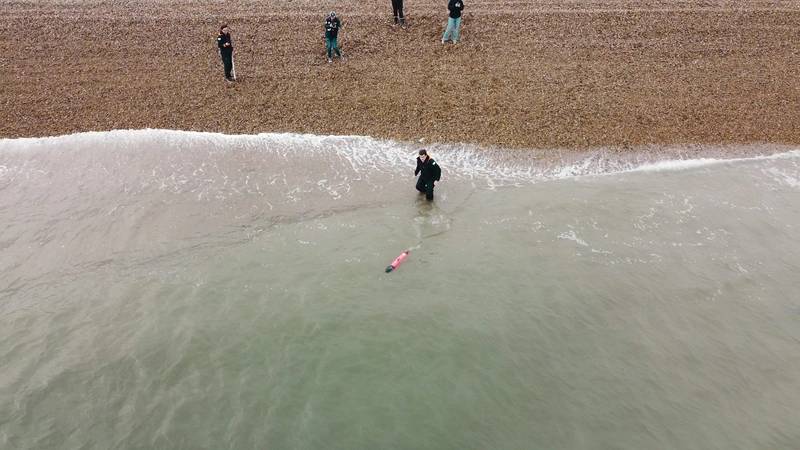 RS Aqua’s batteries were recently put on SEABER’s YUCO micro-ROV when it successfully crossed the English Channel in less than eight hours. Credit: SEABER FR.
RS Aqua’s batteries were recently put on SEABER’s YUCO micro-ROV when it successfully crossed the English Channel in less than eight hours. Credit: SEABER FR.
Earlier this year, Verlume’s seabed battery intelligent energy storage system, Halo, was deployed as part of the Renewables for Subsea Power project in Scotland. The system enables AUVs to dock, recharge batteries, upload data and receive new mission data multiple times without needing offshore intervention, and it can be recharged in-situ using renewable wave, wind, tidal or solar power. There are also potential applications for residential ROVs and AUVs.
“The success of residential AUV charging in this project is a really exciting development, and having that long term residency has opened up some big opportunities for offshore inspection, including within the offshore wind market,” says Slorach. “We're just starting to build a resident underwater vehicle docking station with integrated battery for offshore wind applications.”
Verlume’s intelligent energy management system, Axonn, can deliver a constant output of power from renewable sources to support offshore decarbonization projects and minimize energy loss from electricity generated from offshore wind.
Power management system advancements are key, but Verlume’s CTO, Paul Slorach, says the company is also continually improving the energy density of its systems. Most recently, that has involved a new module design, but he is also keeping an eye on the developments in the electric vehicle market and exploring new battery chemistries.
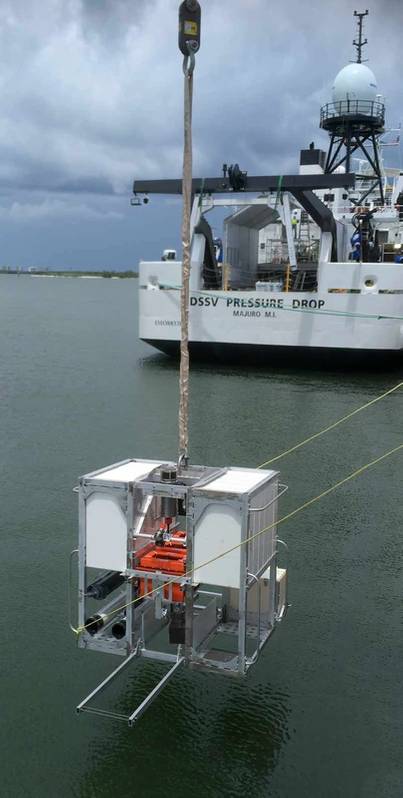 DeepSea’s SeaBattery in use on one of the Five Deeps Expedition landers. Credit: © Caladan Oceanic, LLC.
DeepSea’s SeaBattery in use on one of the Five Deeps Expedition landers. Credit: © Caladan Oceanic, LLC.
One of A.G.O. Environmental Electronics’s latest projects involved designing a set of large battery packs to supply 172V with 21Ah capacity at up to 3,000m depth for subsea technology company Envirex’s SWIFT project. The system was designed for Aker Solutions as a completely wireless and self-powered tool for tubing hanger installation on subsea oil wells.
The deep sea can experience near-zero temperatures that can significantly reduce batteries’ rated performance. Available space is limited such that overall battery pack capacity may be dictated by the pressure vessel size required to withstand the design depth. A.G.O. balanced these challenges by designing titanium pressure cases with nickel-metal hydride (NiMH) batteries. These batteries are rechargeable with a long life and offer the highest energy density by volume of all standard non-lithium-based battery chemistries. They are also rated for operation at near-zero temperatures with minimal performance reductions.
DeepSea says its SeaBattery Power Module has a pressure-compensated design that works in the most demanding applications from surface depths down to 11,000m. While the SeaBattery is used in a variety of contexts, it continues to be favored when reliability is critical to mission success, says DeepSea. This includes use as emergency power for diving bells and autonomous research landers deployed to 11km below the surface, such as those deployed by the Five Deeps Expedition.
The SeaBattery Power Module uses Absorbent Glass Mat lead-acid cells which feature vibration and shock resistance. It is capable of continuing to work at any orientation, and because of their chemistry, the cells do not have the same shipping restrictions as Li-ion batteries.
Sensor and instrument supplier RBR aims for low power consumption but some applications still require additional power. “We regularly deploy RBR instruments and underwater battery canisters on DMO Wirewalker systems - wave-powered profilers that are used in long-term deployments,” says Rob Lee, Director of Marketing. RBR has also deployed its RBRfermata battery canister and its RBRcervata deployment extender (with added battery capacity and data storage) into deep-sea earthquake and tsunami monitoring systems through Ocean Networks Canada. RBR has deployed its RBRfermata battery canister and its RBRcervata deployment extender into deep-sea earthquake and tsunami monitoring systems. Source RBR Global.
RBR has deployed its RBRfermata battery canister and its RBRcervata deployment extender into deep-sea earthquake and tsunami monitoring systems. Source RBR Global.
“We can see the need for more power in shorter-term moored applications as well. A package of active optical sensors can require supplemental power even if the deployment is relatively short. And, if it's in an area that is subject to biofouling, then the mechanical wipers that are required to keep the sensor windows clean will also be a factor,” says Lee.
Electrochem Solutions produces lithium-oxyhalide batteries, a type of lithium primary battery that use a lithium metal anode and a liquid cathode that doubles as the electrolyte. The cells have high energy density and specific energy, in some cases more than 1120 Wh/L and more than 520 Wh/kg, and they have very low rates of self-discharge. They are well suited to devices that are remotely deployed to the sea floor where there is no energy source available for charging, applications where the device is mobile but cannot remain at the surface long enough for adequate charging, and situations where the device will be idle for long periods.
The company’s BCX solution is designed specifically for low temperature performance. Arden Johnson, Fellow Scientist and R&D Manager, says:
“Our BCX cells deliver excellent performance at very low temperatures, 0°C to -55°C. The cells contain an additive that increases the cell voltage and leads to improved start-up and discharge performance under low temperature conditions. A BCX D cell can deliver up to three times the capacity of competitive cells when discharged at -40°C, making the performance of these cells extremely well suited for subsea, oceanographic, and Arctic applications.”
RS Aqua’s batteries were recently put on SEABER’s YUCO micro-ROV, weighing just 10kg and measuring under one meter in length, when it successfully crossed the English Channel in less than eight hours. RS Aqua’s Ocean Scientist, Nathan Hunt, says that prior to the introduction of micro-AUVs, collecting scientific data in coastal environments faced challenges such as spatial coverage and weather. At the end of this 39km test, the micro-ROV still had 35% of its battery power remaining.
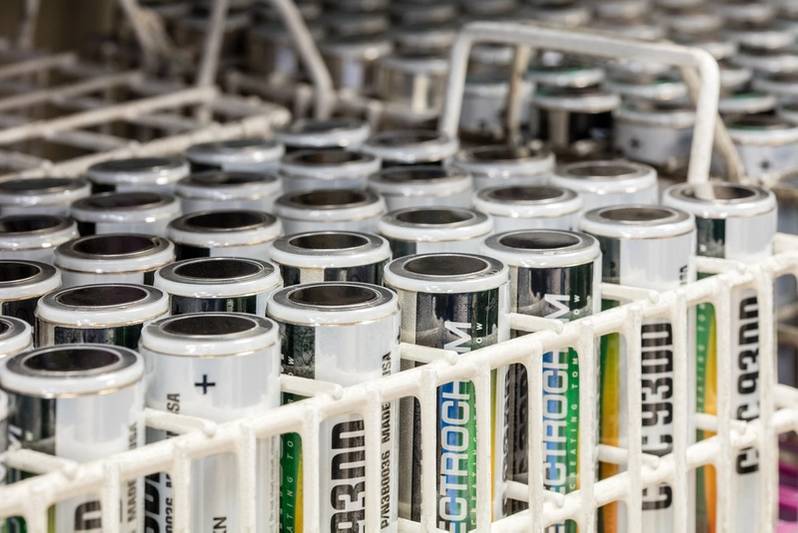 Electrochem Solutions produces lithium-oxyhalide batteries, a type of lithium primary battery that use a lithium metal anode and a liquid cathode that doubles as the electrolyte. Source: Electrochem.
Electrochem Solutions produces lithium-oxyhalide batteries, a type of lithium primary battery that use a lithium metal anode and a liquid cathode that doubles as the electrolyte. Source: Electrochem.









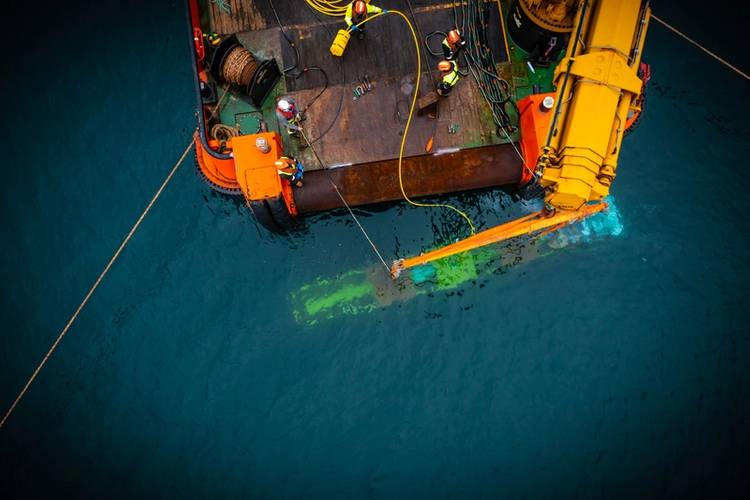
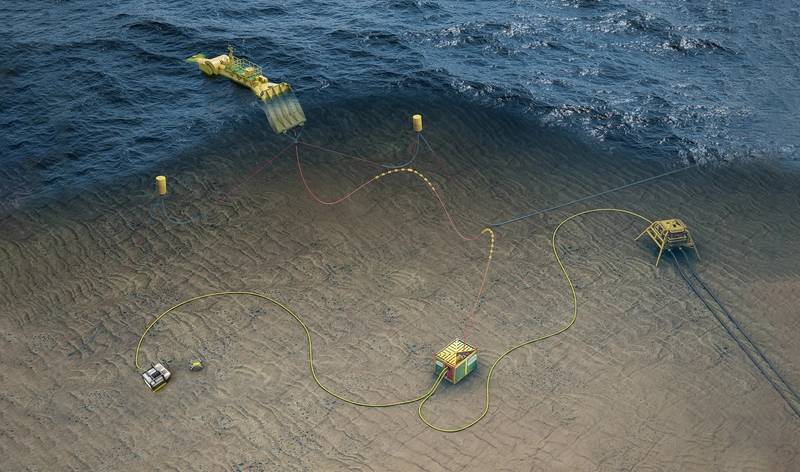
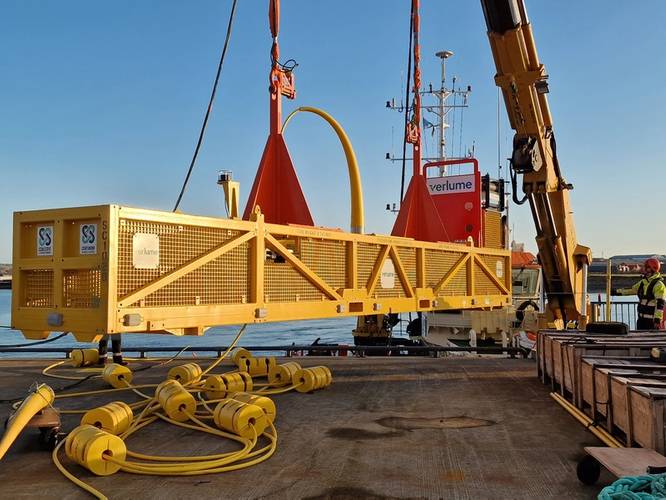
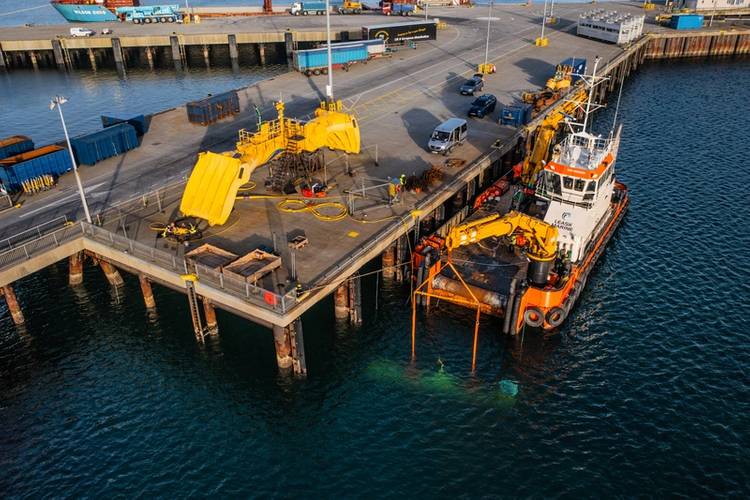
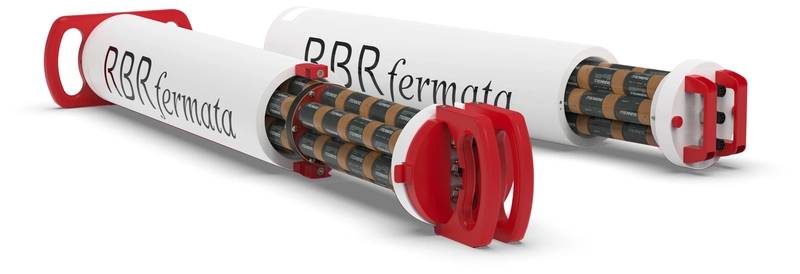
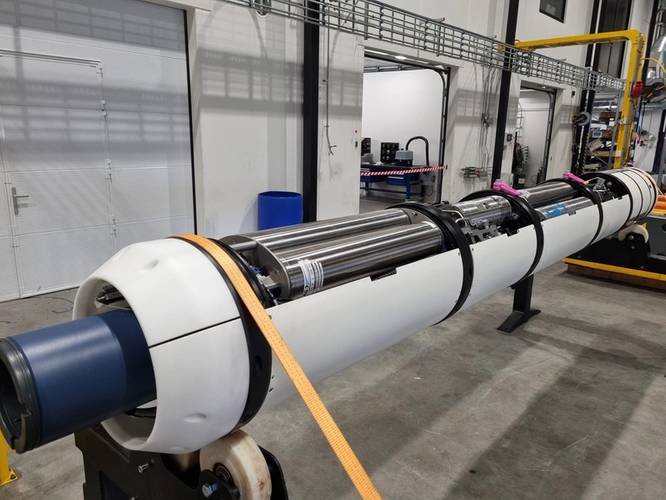
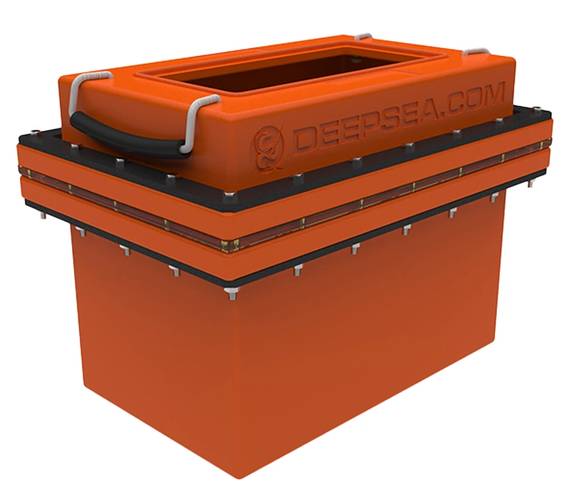
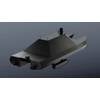
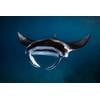

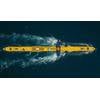

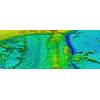







 August 2025
August 2025



